 We’ve been feeling the love for the Netvibes aggregator for some time, and we look to be cuddling up a bit closer now that the company is letting users publish their home pages as personal Web portals – for free.
We’ve been feeling the love for the Netvibes aggregator for some time, and we look to be cuddling up a bit closer now that the company is letting users publish their home pages as personal Web portals – for free.
In case you haven’t already hooked up to this Web 2.0-tastic, AJAX-fuelled marvel, Netvibes is a customisable home page that lets you add and configure a personalised page to include live news feeds, Last.FM players, blog updates, weather reports, text, image and video search tools, email inboxes and a ton of other stuff.
The Paris-based company is now hoping to sock it to The Man by letting users publish their own standalone portals, and steal a march on the big Internet playaz like Google, Microsoft, Yahoo and AOL.
“The portal is dead. Long live the portal,” air-punched Tariq Krim, Netvibes’ founder and chief executive.
 Mix’n’matching the webThe power of the Netvibes portal means that users can mix and match email accounts from the likes of Gmail, Hotmail and Yahoo, and add whatever content they fancy, regardless of the source.
Mix’n’matching the webThe power of the Netvibes portal means that users can mix and match email accounts from the likes of Gmail, Hotmail and Yahoo, and add whatever content they fancy, regardless of the source.
The Web based interface is a marvel of modern web technology too, letting users drag and drop ‘modules’ around the page without any need to delve into the dark world of coding.
 The new Netvibes Universe service lets users design their own homepage and slap it on the web in minutes via the Netvibes Ecosystem. These pages can be configured to include personalised feeds such as videos, photos, podcasts, news, e-mail and eBay auction notifications.
The new Netvibes Universe service lets users design their own homepage and slap it on the web in minutes via the Netvibes Ecosystem. These pages can be configured to include personalised feeds such as videos, photos, podcasts, news, e-mail and eBay auction notifications.
Netvibes has also signed up over 100 publishing partners, including pop stars and media companies like Time, USA Today, and the Washington Post, who will offer their own versions of Netvibes homepages.
Welcome to the world of Web 2.0
“Netvibes provides open access to the world of Web 2.0 content,” said Forrester Research analyst Charlene Li. “Traditionally, you had to ask each company permission to do this on any Web site. Now you can read Gmail alongside Hotmail and Yahoo Mail,” she added.
 Li reckoned that even folks working in Google and Yahoo felt that the big boys should give up trying to stop surfers from using competing products, as the shiny Internet of the Noughties means that services need to live side-by-side with competitors.
Li reckoned that even folks working in Google and Yahoo felt that the big boys should give up trying to stop surfers from using competing products, as the shiny Internet of the Noughties means that services need to live side-by-side with competitors.
“With Web 2.0, no one can own the whole space. In the past, you wanted everyone to come to your site. Right now, you need to figure out how to distribute your content to the widest number of platforms,” said Netvibes’ Krim. “We try to be the glue between all these Web services,” he continued.
Netvibes Universe goes live next Monday.
CNet
 There’s a common thought that Moore’s Law in relation to processing power has now become irrelevant, due to the now-attained high processing speeds. In it’s place is a form of Moore’s Law for storage and how important it’s rapid growth is.
There’s a common thought that Moore’s Law in relation to processing power has now become irrelevant, due to the now-attained high processing speeds. In it’s place is a form of Moore’s Law for storage and how important it’s rapid growth is.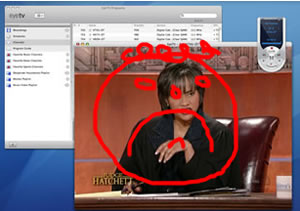 The new software works with all the Miglia decoders and offers similar functionality to EyeTV.
The new software works with all the Miglia decoders and offers similar functionality to EyeTV.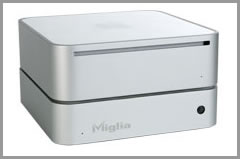 The software also works directly with iTunes so stored video will appear on any connected AppleTVs.
The software also works directly with iTunes so stored video will appear on any connected AppleTVs.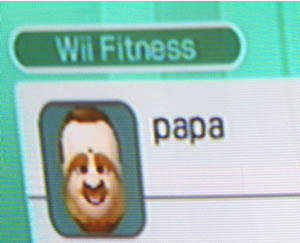 We’ve recently been playing the Wii intensively for two weeks and did find that our right (playing) wrist aching, but that’s probably because we haven’t used it for much besides mousing-around for the last couple of years.
We’ve recently been playing the Wii intensively for two weeks and did find that our right (playing) wrist aching, but that’s probably because we haven’t used it for much besides mousing-around for the last couple of years. YouTube watchers will be well aware of
YouTube watchers will be well aware of 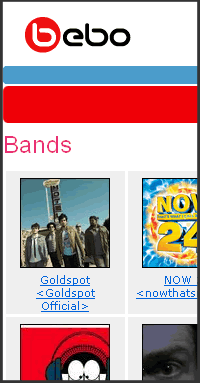 This time they’re being upfront from the start that Kate Modern isn’t real. There will be video pieces and posts made to her Bebo profile.
This time they’re being upfront from the start that Kate Modern isn’t real. There will be video pieces and posts made to her Bebo profile. Official confirmation of the European release has this morning been announced – and it’s to arrive in two flavours.
Official confirmation of the European release has this morning been announced – and it’s to arrive in two flavours.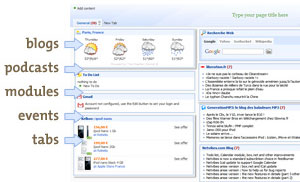 We’ve been feeling the love for the Netvibes aggregator for some time, and we look to be cuddling up a bit closer now that the company is letting users publish their home pages as personal Web portals – for free.
We’ve been feeling the love for the Netvibes aggregator for some time, and we look to be cuddling up a bit closer now that the company is letting users publish their home pages as personal Web portals – for free.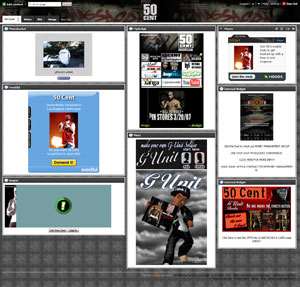 Mix’n’matching the webThe power of the Netvibes portal means that users can mix and match email accounts from the likes of Gmail, Hotmail and Yahoo, and add whatever content they fancy, regardless of the source.
Mix’n’matching the webThe power of the Netvibes portal means that users can mix and match email accounts from the likes of Gmail, Hotmail and Yahoo, and add whatever content they fancy, regardless of the source.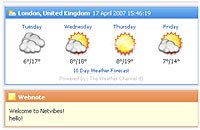 The new Netvibes Universe service lets users design their own homepage and slap it on the web in minutes via the Netvibes Ecosystem. These pages can be configured to include personalised feeds such as videos, photos, podcasts, news, e-mail and eBay auction notifications.
The new Netvibes Universe service lets users design their own homepage and slap it on the web in minutes via the Netvibes Ecosystem. These pages can be configured to include personalised feeds such as videos, photos, podcasts, news, e-mail and eBay auction notifications.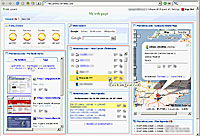 Li reckoned that even folks working in Google and Yahoo felt that the big boys should give up trying to stop surfers from using competing products, as the shiny Internet of the Noughties means that services need to live side-by-side with competitors.
Li reckoned that even folks working in Google and Yahoo felt that the big boys should give up trying to stop surfers from using competing products, as the shiny Internet of the Noughties means that services need to live side-by-side with competitors.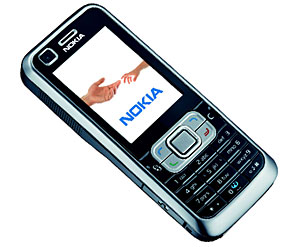 Claimed to offer downloads “up to 10 times faster than over usual WCDMA networks,” the Nokia 6120 bigs up its multimedia credentials sporting two cameras. The first is a basic, low res affair slapped on the front for video calls, while the main camera serves up 2-megapixels worth of picture-grabbing, 4-times digital zoom, a built in flash and a panorama mode.
Claimed to offer downloads “up to 10 times faster than over usual WCDMA networks,” the Nokia 6120 bigs up its multimedia credentials sporting two cameras. The first is a basic, low res affair slapped on the front for video calls, while the main camera serves up 2-megapixels worth of picture-grabbing, 4-times digital zoom, a built in flash and a panorama mode.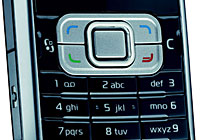 There’s Bluetooth on board for wireless streaming of stereo sounds, a built-in FM radio, support for MP3/AAC/MPEG4 tuneage and a micro SD card slot for slapping in some more memory capacity.
There’s Bluetooth on board for wireless streaming of stereo sounds, a built-in FM radio, support for MP3/AAC/MPEG4 tuneage and a micro SD card slot for slapping in some more memory capacity.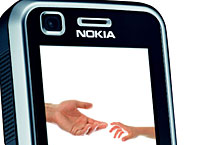 Here’s Peter Ropke, Senior Vice President, Mobile Phones, Nokia to whip us into a frenzy of expectation for the phone, “With the HSDPA technology, S60 operating system and the wide range of features of the Nokia 6120 classic, consumers will be able to make their daily lives more manageable.”
Here’s Peter Ropke, Senior Vice President, Mobile Phones, Nokia to whip us into a frenzy of expectation for the phone, “With the HSDPA technology, S60 operating system and the wide range of features of the Nokia 6120 classic, consumers will be able to make their daily lives more manageable.” In May 2004 it was ‘
In May 2004 it was ‘ The world’s top handset maker Nokia has announced that it expects to start shifting mobile devices using the WiMAX Internet technology by early 2008.
The world’s top handset maker Nokia has announced that it expects to start shifting mobile devices using the WiMAX Internet technology by early 2008.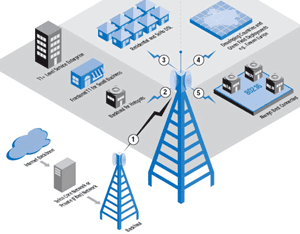 Nokia’s numero uno handset rival, Motorola, has announced that it fancies a piece of the WiMAX action too, saying that they’ll also be bringing a WiMAX enabled mobile phone to market in 2008.
Nokia’s numero uno handset rival, Motorola, has announced that it fancies a piece of the WiMAX action too, saying that they’ll also be bringing a WiMAX enabled mobile phone to market in 2008.